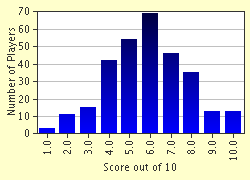Quiz Answer Key and Fun Facts
1. It is certain that as long as man has existed there has been tooth decay and the need for remedies. Doubtless, small sticks were used as toothpicks and frayed wood as brushes. The earliest recorded writings of dental disease have been found in clay tablets from Sumeria. Dated from between 5000 - 3000BC, this civilisation attributed tooth decay to the activity of which tiny animals?
2. The inscription on a tomb in 2600 BC records the death of Hesy-Re. Described in part as "the greatest of those who deal with teeth, and of physicians" to which ancient civilisation did this early dentist belong?
3. The ancient Greeks also wrote of dental practices. From 500 - 300 BC, Hippocrates and Aristotle wrote about many aspects of dentistry including the eruption pattern of teeth. What other areas did they also address?
4. Martyred in 249 AD, a deaconess of the church in Alexandria was seized by an angry mob and tortured. Accounts vary as to whether all her teeth were broken or forcibly extracted. This excruciating treatment failed to sway her Christian beliefs and she is now considered the patron saint of dentistry.
5. As dental practices evolved, a lot of faith was placed in the use of magic. In 1013 AD, a Spanish moor of Cordova - Albucasis, described a much more practical approach. He insisted on accurate diagnosis and produced a book carrying illustrations of dental instruments. Which instruments were described?
6. Monks and barbers were both involved in medicine and dentistry at the beginning of the middle ages. Barbers acted as assistants, with monks assuming the role of practitioner. What happened to eliminate the monks' role in early dental practice?
7. After a Guild of Barbers was established in France in 1210, two groups evolved. Surgeons were educated to perform complex surgical operations. Barber-surgeons on the other hand performed shaving, bleeding and extractions. Unfortunately they were not alone. Which disreputable group also performed crude extractions?
8. Universities were founded around 1300 in places like Oxford, Paris and Bologna. Dental texts began to make their appearance and Guy de Chauliac wrote on dental pathology in 1386. Giovanni de Arcoli proposed fairly modern techniques in 1400. What were some of his "radical" ideas?
9. Many famous scientists contributed to the emergence of modern dental knowledge without actually practising in the profession themselves. Leonardo da Vinci (15th C) described the anatomy of the jaws and teeth. Eustacius (1500) was the first to provide a complete anatomical description of a tooth. Leeuwenhoek detailed dental tubuli and was the first to see dental organisms. What invention helped his dental observations?
10. In 1728 Pierre Fauchard published "The Surgeon Dentist, A Treatise on Teeth" ("Le Chirurgien Dentiste"). Known as the "Father of Modern Dentistry", his book is considered by many to be the true origin of scientific dentistry. In his writings he proposed many new and unheard of ideas for dental practitioners of his day. What was one of his proposals?
Source: Author
Nannanut
This quiz was reviewed by FunTrivia editor
crisw before going online.
Any errors found in FunTrivia content are routinely corrected through our feedback system.

